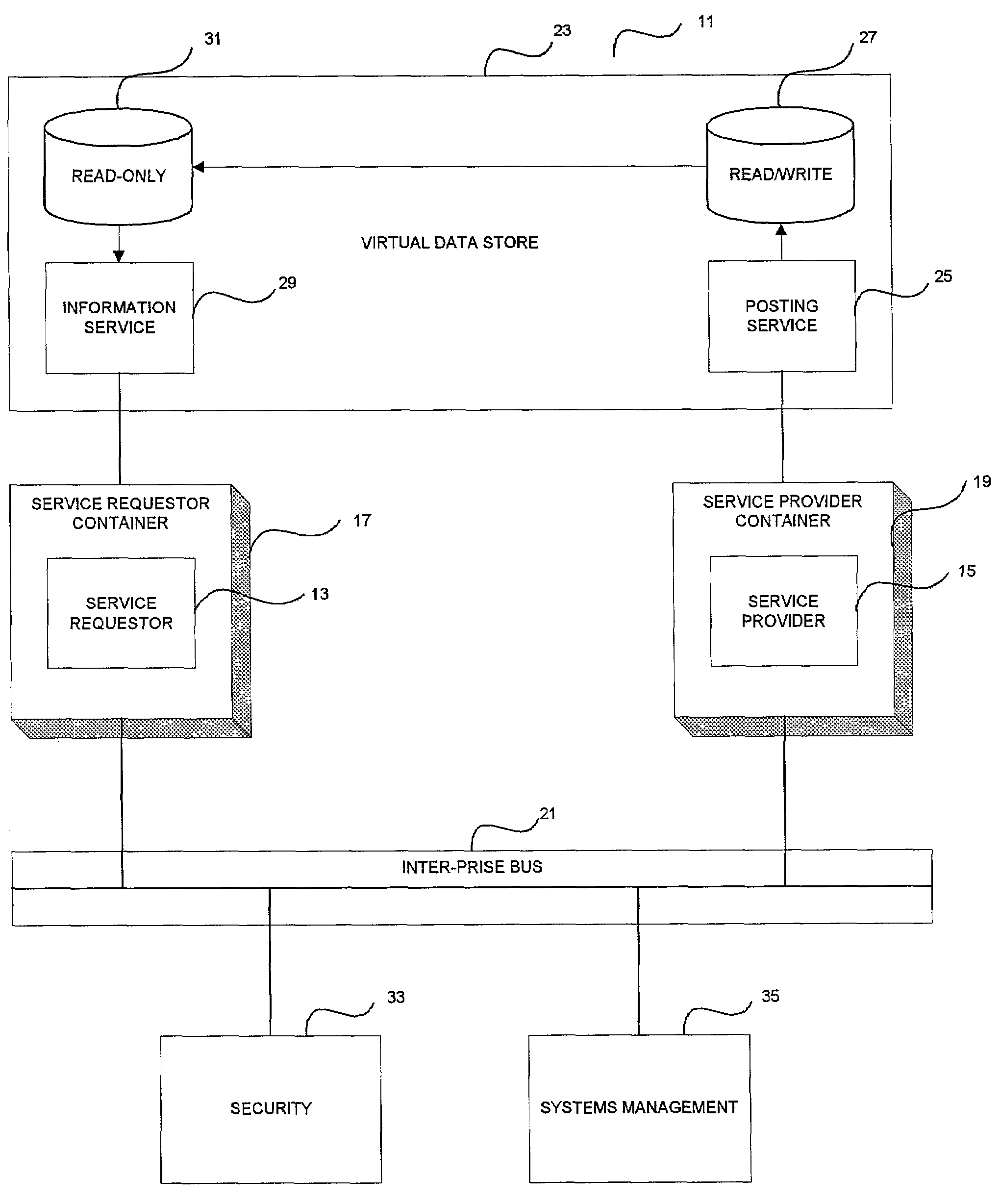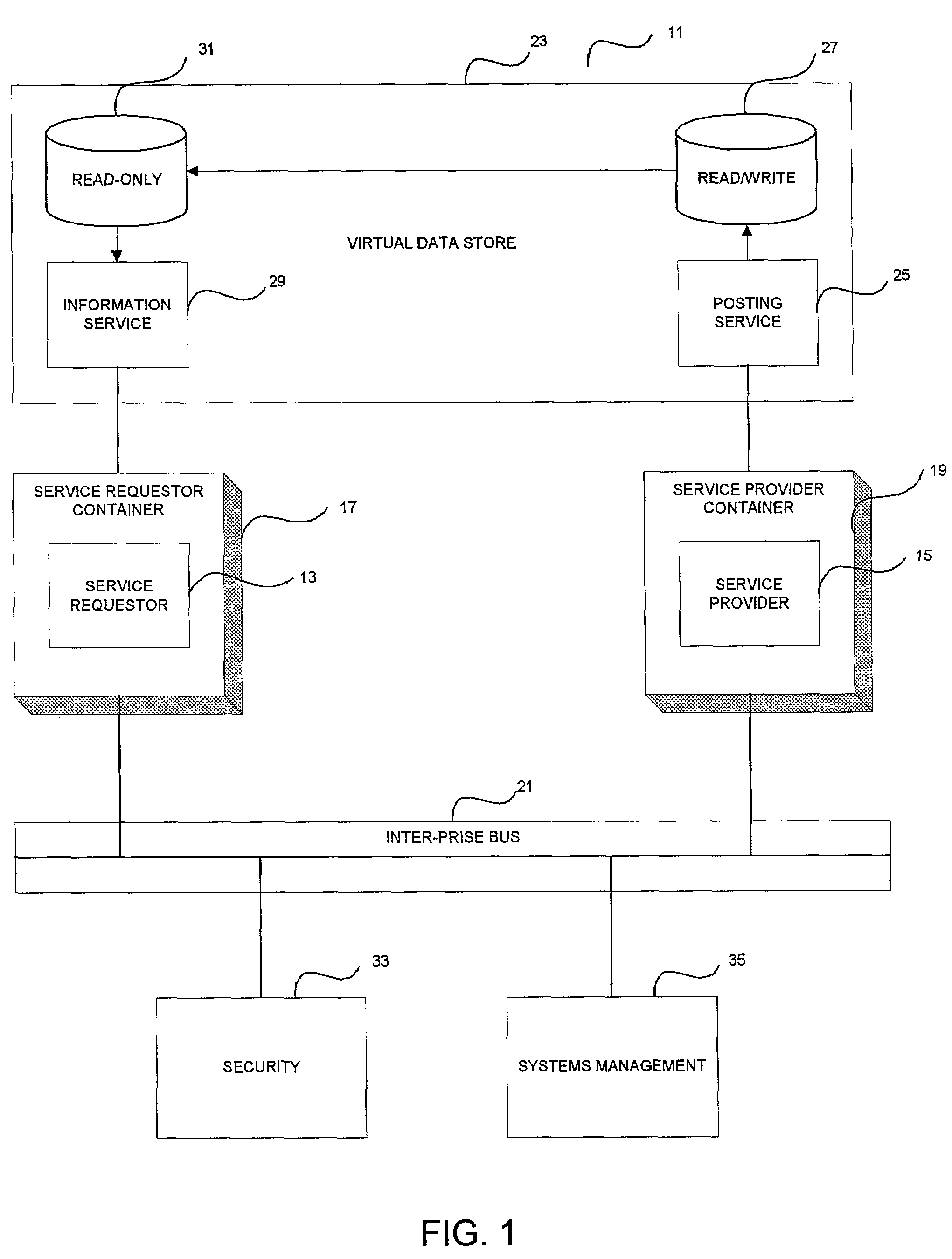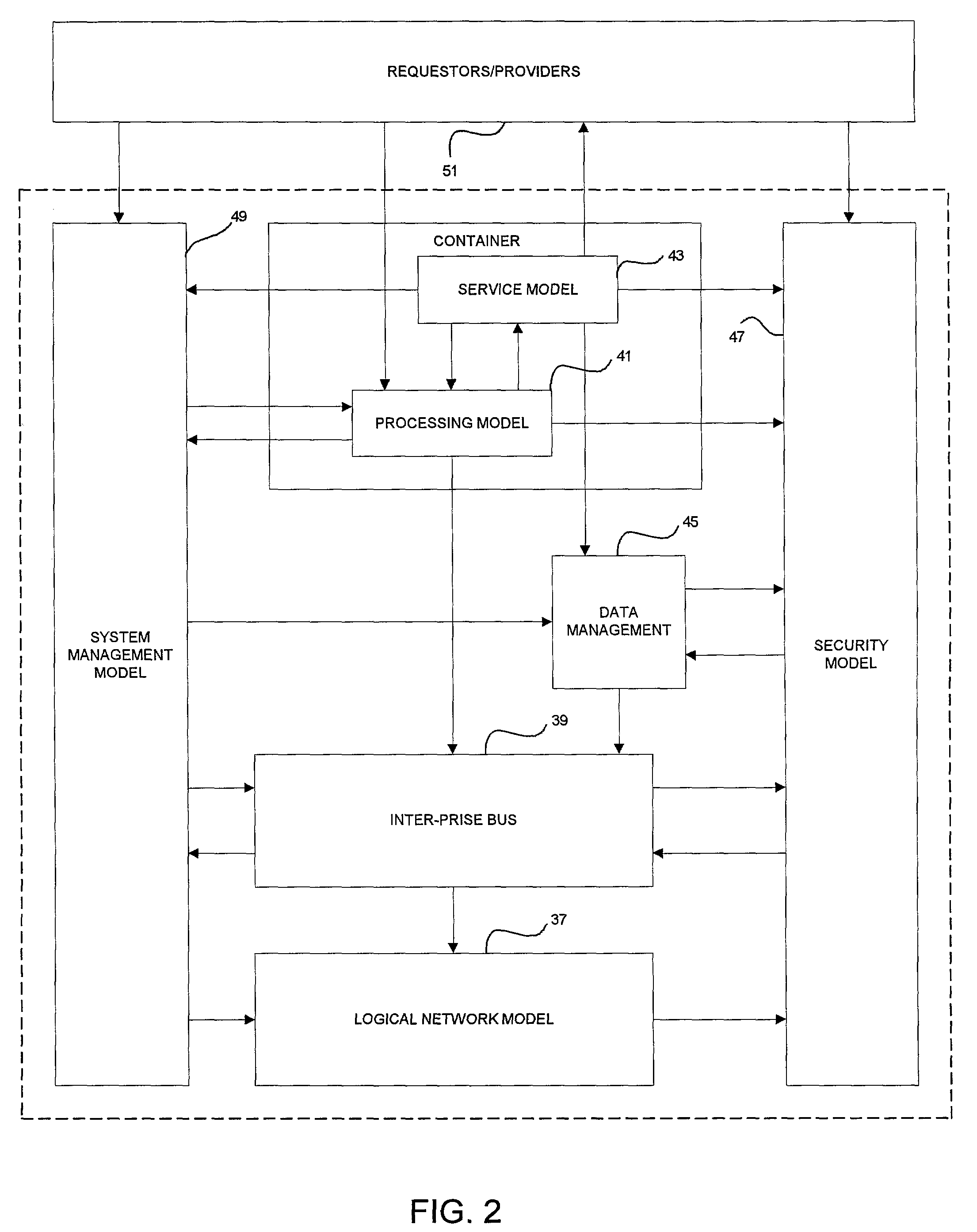Distributed computing system architecture
a computing system and distributed computing technology, applied in the field of distributed computing system architectures, can solve the problems of high maintenance costs, system complexity never as simple, and duplication of code that had a severe impact on maintenan
- Summary
- Abstract
- Description
- Claims
- Application Information
AI Technical Summary
Benefits of technology
Problems solved by technology
Method used
Image
Examples
Embodiment Construction
[0034]Referring now to the drawings, and first to FIG. 1, a block diagram of an inter-prise operating system according to the present invention is designated generally by the numeral 11. According to the present invention, asynchronous services, such as a service requester 13 and a service provider 15, reside in containers 17 and 19, respectively. As will be explained in detail hereinafter, containers 17 and 19 simplify the programming of applications by providing a way of naturally invoking services according to a processing model and provide an environment in which services may run according to a services model.
[0035]Services 13 and 15 are linked by an inter-prise bus 21, which handles messaging between requestors 13 and providers 15. According to the present invention, a particular application can be either a service requester or a service provider.
[0036]Services use data from a virtual data store 23. As will be explained in detail hereinafter, virtual data store 23 includes a po...
PUM
 Login to View More
Login to View More Abstract
Description
Claims
Application Information
 Login to View More
Login to View More - R&D
- Intellectual Property
- Life Sciences
- Materials
- Tech Scout
- Unparalleled Data Quality
- Higher Quality Content
- 60% Fewer Hallucinations
Browse by: Latest US Patents, China's latest patents, Technical Efficacy Thesaurus, Application Domain, Technology Topic, Popular Technical Reports.
© 2025 PatSnap. All rights reserved.Legal|Privacy policy|Modern Slavery Act Transparency Statement|Sitemap|About US| Contact US: help@patsnap.com



